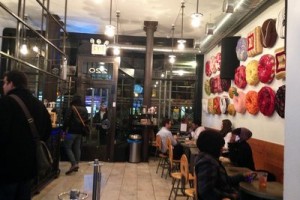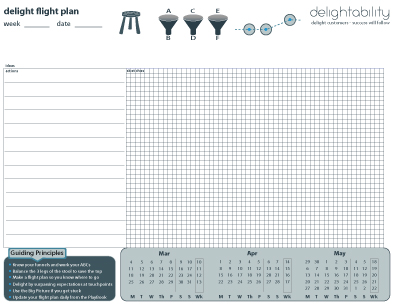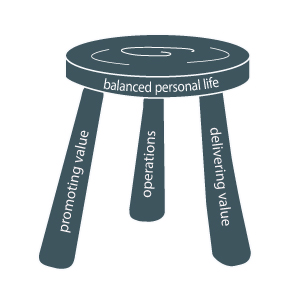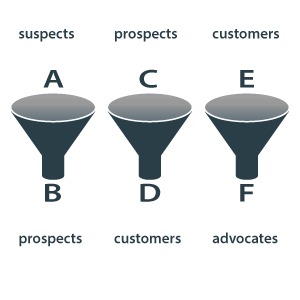Like most entrepreneurs and small business owners, you likely have a long list of things that get shoved off to the back burner waiting for another day or week when there is more time. The trouble is, more time never actually arrives, right?
Today is no different from yesterday and tomorrow will look much the same. You only have 24 hours in a day. When it comes to time, there is no aristocracy of wealth. Genius or laziness is not rewarded or punished with any more time.
The 3-Legged Stool

Every small business owner struggles with maintaining balance among these areas:
- Maintaining a smooth operation – invoicing customers, paying expenses, having good procedures in place to prevent business breakdown and wasting resources
- Delivering value – providing to customers whatever your business does as its core offering, i.e., products, services, and support
- Promoting value – performing the sales, marketing, and business development functions to ensure 1) prospects know your business exists; 2) customers understand your value and provide you with validation; and 3) employees, partners, and customers stay engaged.
Stop Letting Your Personal Life Suffer
The person sitting atop a well-balanced 3-legged stool has the opportunity for a personal life. Chances are you’re not very good at all three legs of the stool. In a large company you have the benefit of departments to focus on activities related to the different legs of the stool. That probably isn’t the case in your small business where you have to spread your time, talent, and attention across sales, marketing, account payable, human resources, product development, etc. Even if you are good in all areas, you’ll struggle with the limited time available. When the legs of the stool get out of balance or become all-consuming then you and your personal life get sacrificed or worse, topple to the ground. Business performance then also suffers. We’ve all been there.
Five Things to Overcome the Struggle
- Recognize the need to slow down: sometimes you need to slow down in order to speed up. It is true when hiking up a steep trail and it’s also true in business. As a now deceased friend has taught me, “Make time to linger.” R.I.P. Donald Marsh.
- Revisit your operation: perhaps you need new operating mechanisms that could prevent snags in the business operation that if left unresolved will end up consuming resources. As a start, begin to identify where your time gets wasted. If you don’t know, begin monitoring your own time over the next week or month. Identifying the workarounds could be a place to fix first. If you have employees, they’ll know these rough spots.
- Stay on course: your energy spread in too many directions can fatigue you and crush personal and business performance. Be deliberate on your destination and script the critical moves needed to get there. Read the Destination Postcards article for an exercise that can bring discipline to charting a course and then staying true to that course.
- Confront reality: mind the uncomfortable gap you have between your current performance and expected performance. Focus on key areas and find acceptable discomfort for what you’ll not work on in the near term. You cannot do it all, so find some peace in accepting that. See Business Performance Continuums exercise.
- Force multiply through others: recognize that you cannot do it alone. It is difficult to involve somebody else in your projects and business, especially if you already feel overwhelmed. But, chances are you’ve wasted more time agonizing over how to start a project that another person would have completed by now, if you engaged them. There is plenty of talent available to help you in whatever your endeavor is. More talent on the team can come in many forms: full-time or part-time, employee or alliance with a service provider. At Delightability, we are a virtual marketing department serving clients’ needs, providing both consulting and creative services. Whether small or large projects, every one of our client engagements involved busy business leaders, like you. But, remember what our clients have now come to realize, namely, that you don’t get the benefits of a strategy not implemented.
Write that down on your wall or whiteboard and revisit it often, “You don’t get the benefits of a strategy not implemented.” Eventually, you’ll do something different to close your uncomfortable gap across the 3 legs of the stool while at the same time getting your personal life to soar.
about the author
Gregory Olson is a business and marketing consultant, author, and speaker. He founded strategy and design firm Delightability, LLC. with the belief that if you delight customers then success will follow. He believes that we all have the potential to do better, as individuals, organizations, and entire nations.
 Gregory Olson’s latest book is L’ impossipreneurs: A Hopeful Journey Through Tomorrow, a light-hearted and deadly serious book about a brighter future where we live more meaningful lives, governments invest in people and sustainable progress, and technology serves humans.
Gregory Olson’s latest book is L’ impossipreneurs: A Hopeful Journey Through Tomorrow, a light-hearted and deadly serious book about a brighter future where we live more meaningful lives, governments invest in people and sustainable progress, and technology serves humans.
Greg also authored The Experience Design Blueprint, a book about designing better experiences and then making them come true.



 There is another audience that is underrepresented, and is often similarly ignored, taken for granted, and largely invisible to government, namely small business. You hear it often, that small business is the backbone of the economy. Small business creates more jobs more quickly while large organizations may continue to shed jobs, bolstering profits and earnings along the way to their short term utopia. Small business owners are usually so busy working that they too join the ranks of the invisible and marginalized. This is especially true of small businesses that have no storefront, operate virtually, often invisible to the public, and out of mind of city government.
There is another audience that is underrepresented, and is often similarly ignored, taken for granted, and largely invisible to government, namely small business. You hear it often, that small business is the backbone of the economy. Small business creates more jobs more quickly while large organizations may continue to shed jobs, bolstering profits and earnings along the way to their short term utopia. Small business owners are usually so busy working that they too join the ranks of the invisible and marginalized. This is especially true of small businesses that have no storefront, operate virtually, often invisible to the public, and out of mind of city government.



